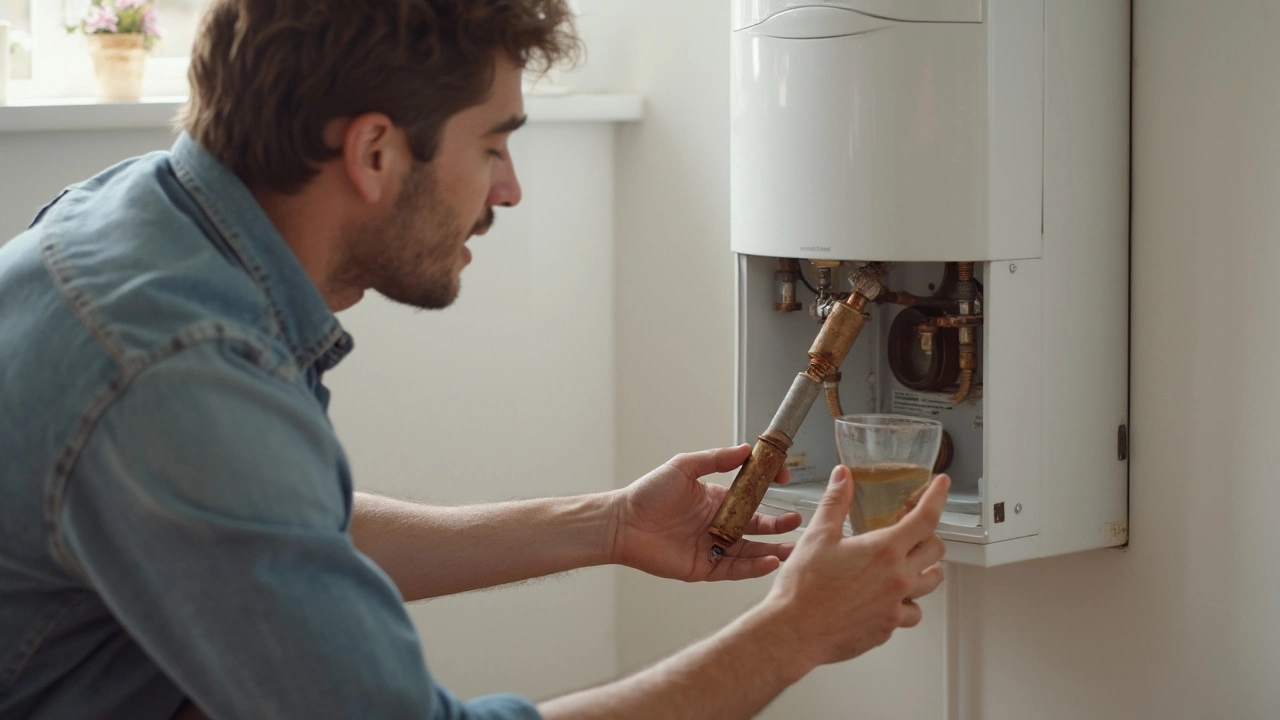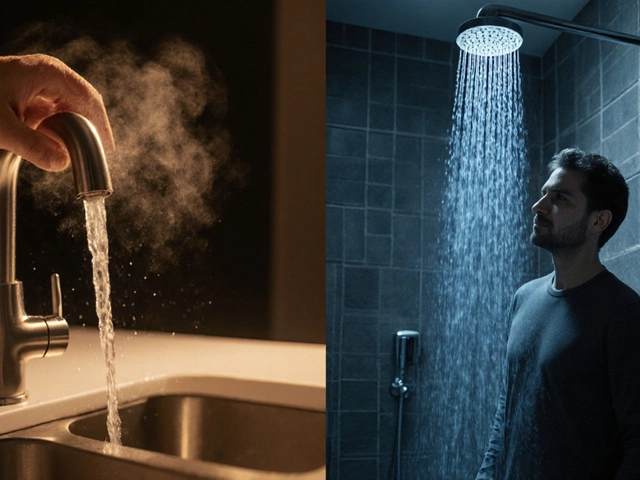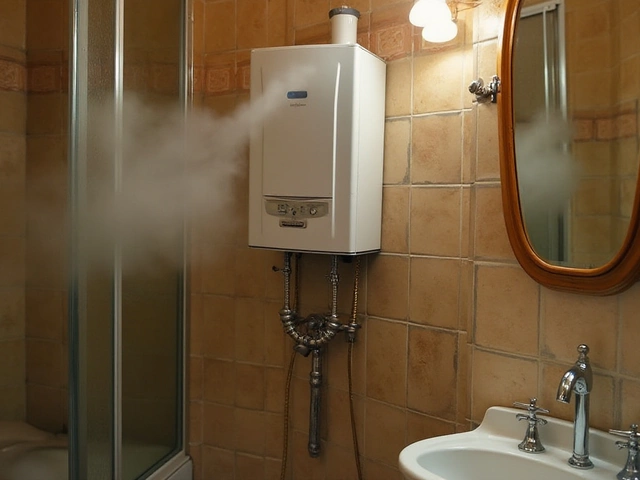Rusty water coming out of the tap? That's usually your first red flag. The anode rod inside your water heater fights off rust—literally sacrificing itself so your tank doesn't corrode. But this rod doesn't last forever, and if you ignore it, you could end up forking over cash for a new heater way sooner than you'd like.
If you get smelly hot water, it's not just bad luck. That rotten egg odor often means your anode rod is running out of juice. Another giveaway? Flakes of metal or dark-colored water coming from your faucets—classic signs things inside aren't working right. And if your tank is more than three years old and you've never checked the rod, now's the time. Waiting too long can turn a cheap repair into an expensive headache.
- What Does an Anode Rod Even Do?
- How to Spot a Bad Anode Rod
- When (and How) Should You Check It?
- Pro Tips for Replacement and Prevention
What Does an Anode Rod Even Do?
The anode rod is basically the hero inside your water heater, even though you never see it. Its job is to attract nasty minerals and corrosion so they attack the rod, not the tank itself. Manufacturers call it a "sacrificial" rod—because it’s designed to get eaten up first, saving your water heater from rust.
Most rods are made of magnesium, aluminum, or a mix. They screw right into the top of the tank. Once water starts heating up, the rod slowly breaks down as it keeps the inside of the tank from rusting. This single piece of metal can add years to your water heater's life if you keep an eye on it.
Why does it work? The rod is a more reactive metal than the steel of your tank, so when the minerals in water try to rust something, they go for the rod every time. The fancier name for this is "cathodic protection." You don’t need to know the chemistry to appreciate the savings—a $30-$60 anode rod can keep a $1,000 tank from biting the dust.
| Material | Lifespan (years) | Common Use |
|---|---|---|
| Magnesium | 3-5 | Standard tanks, softer water |
| Aluminum | 4-7 | Hard water |
| Zinc-alloy | 4-7 | Odor control & mixed water sources |
Ignoring the anode rod is like skipping oil changes on your car. It’ll run... until one day it won’t. Keeping it in good shape is one of the easiest ways to avoid sudden, messy water heater repair bills.
How to Spot a Bad Anode Rod
When it comes to catching a worn-out anode rod, your nose and eyes can usually pick up the first clues. Here’s what you want to look—and sniff—for before grabbing your toolbox.
- Strange Smells: If your hot water reeks of rotten eggs, it's probably because of sulfur bacteria reacting with a depleted anode. This smell comes from hydrogen sulfide gas, which is never a good sign.
- Rusty or Discolored Water: Notice brown, red, or dark yellow water coming from your tap when you turn on the hot water? That’s corrosion in action; the anode rod might not be doing its job anymore.
- Metal Flakes or Sediment: If you spot gritty stuff in your sink or tub, it may be tiny bits of your water heater’s insides. This means the rod and parts of your tank could be breaking down.
- Unusual Noises: Popping or rumbling from your heater? That’s often from sediment building up as parts inside corrode, usually because the anode rod has fizzled out.
Sometimes, the only way to really know is to pull the anode rod out for a look. If it’s worn down to just the steel core or covered in deep pits, it’s shot. According to most manufacturers, a healthy rod is around ¾ inch thick. If it’s thinner than a pencil or looks super rough, time to swap it out.
| Common Sign | What It Means |
|---|---|
| Rotten egg smell | Rod is spent, bacteria reacting with tank |
| Rusty water | Corrosion, rod no longer protecting |
| Metal flakes | Rod/tank is breaking down |
| Popping sounds | Sediment buildup, rod ineffective |
The journal Home Energy puts it straight:
"Checking and replacing your anode rod is the cheapest insurance against tank failure."All it takes is a quick check once a year. Small effort, big savings.

When (and How) Should You Check It?
If your anode rod hasn’t crossed your mind since you got your water heater, you’re not alone. Still, if you want that heater to last, checking it is a must. Most pros recommend taking a look every 2 to 3 years—more often if your water is hard or if your tank is over five years old. In my experience (and trust me, Muffin’s more reliable about barking at the mailman than some folks are at water heater upkeep), waiting more than three years without a peek is asking for trouble.
You don’t need any fancy tools, but you do need a socket wrench, maybe a breaker bar for stubborn rods, and a little muscle. Here’s what you do:
- Turn off the power supply (electricity or gas) and let the water cool. Safety first—nobody wants steam burns.
- Shut off the cold water valve going into the tank.
- Pop the pressure by opening a hot water tap in your house.
- Find the anode rod—usually under a plastic cap on top of the heater.
- Use your socket wrench to loosen and remove the rod. Sometimes you’ll need a breaker bar—that rod can be tight.
Once the rod is out, check for heavy corrosion. If it looks chewed up, less than half as thick as it used to be, or it’s just a thin wire, it’s time to replace it. Here’s a quick table that spells out what you’re looking for:
| Rod Condition | What It Means |
|---|---|
| Mostly intact, some wear | You’re good for now. Check again next year. |
| Corroded, but some metal left | Replace soon. Don’t push your luck. |
| Wire core exposed or rod gone | Replace ASAP! Your tank is in the danger zone. |
Don’t just take my word for it. As the Department of Energy puts it,
“To extend the life of your water heater and reduce the risk of leaks, inspect your anode rod regularly and replace it when necessary.”
If you hear banging, popping, or rumbling noises from the tank, that’s another sign things inside are not happy—possibly from sediment or a dead anode rod. Regular checks are like cheap insurance, keeping the hot water flowing and expensive repairs at bay.
Pro Tips for Replacement and Prevention
Replacing the anode rod isn’t as scary as it sounds. Most water heaters have the rod right on top—usually under a hex nut. You’ll need a socket wrench (and maybe some muscle if it’s old and stuck). Before you do anything, shut off the power to your heater (or gas supply), and let the tank cool down for safety.
Here’s a quick step-by-step if you want to DIY:
- Turn off the water supply to your water heater.
- Open a hot water tap for a few seconds to relieve pressure.
- Drain a few gallons so water level is below the rod.
- Use your wrench to unscrew and pull out the old rod.
- If it's less than half a pencil in thickness or totally worn out, swap it for a new anode rod—usually magnesium or aluminum.
- Roll in some plumber’s tape on the threads, install the new rod, and tighten it up.
- Turn your water back on, restore power, and you’re set.
If you’ve got a tall ceiling or the tank’s tight in a corner, look for a flexible anode rod. These snake into tight spaces where a straight rod won’t fit.
Now for the prevention side: check that rod every 2-3 years, or more often if you have really hard water. Don’t push it past 5 years. If you see build-up or the rod is nearly gone, don’t wait—replace it. It’s a cheap fix that can add years to your water heater.
Most people are surprised how much money this saves. On average, swapping out a $30 anode rod can prevent a $1000 water heater replacement. Here’s a quick look at the cost comparison:
| Part/Service | Typical Cost (USD) |
|---|---|
| Anode Rod Replacement | $20 - $50 |
| Water Heater (new) | $700 - $2,000 |
| Corrosion Repair | $150 - $450 |
Last tip—if your dog Muffin drinks from the toilet, keep that water clean, because flakes from a dying anode rod can end up in weird places if the system is really bad. Stay ahead of it and save yourself the drama.




